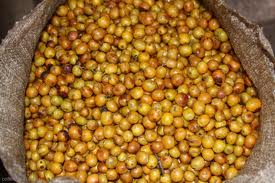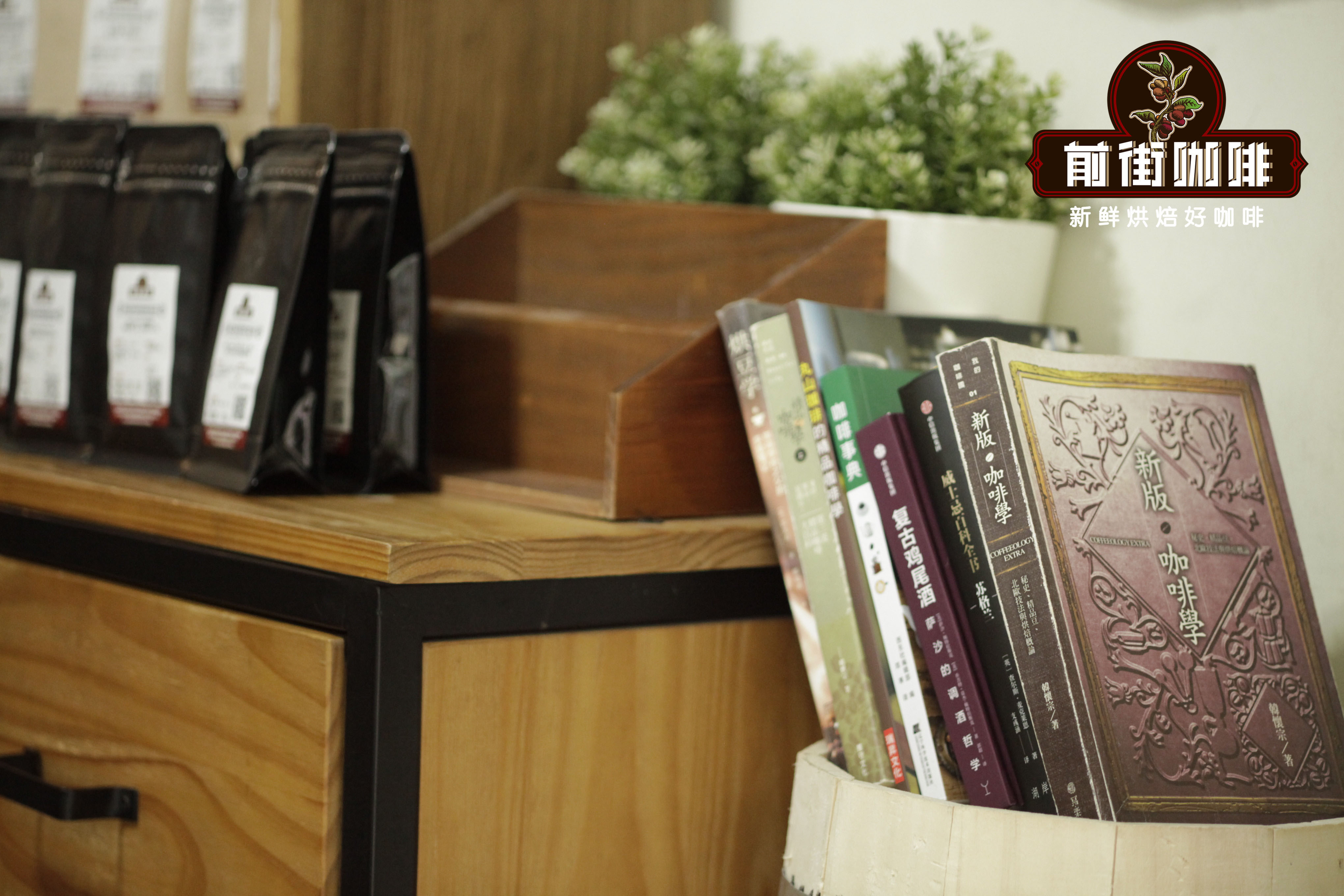What are Brazilian coffee brands? What is the best Brazilian coffee brand pilao?

Professional coffee knowledge exchange More coffee bean information Please pay attention to coffee workshop (Weixin Official Accounts cafe_style)
Learn more about the world's largest coffee producing country "Brazil" Brazilian coffee bean grade
Coffee beans are the seeds of coffee fruits, processed by factories, roasted, ground by baristas, brewed, and finally become coffee we drink. Just like drinking wine, you are drinking grapes used in winemaking. Similarly, drinking coffee, in fact, you are drinking the taste of coffee beans. Since coffee beans are seeds,
Its tree species and growing environment (origin) will have a great impact on flavor.
Grapes eat it, red grapes, black grapes, white grapes are grapes, but there is a huge difference in taste, the reason lies in their tree species and growth environment (origin) is different.
Coffee bean varieties
Coffee is an evergreen shrub belonging to the genus Coffea of Rubiaceae. There are about forty kinds of plants under the branch of Coffea.
There are only three types of coffee that have commercial value:
Coffea Arabica (yield: 69%)
Coffea robusta (yield: 30%)
Liberian species (Coffea Liberica)(yield: 1%)
These three varieties are known as the "three original coffee species."
Arabica, Robosta, Liberia
There are many varieties of coffee.
Taxonomic classification criteria are based on "kingdom, phylum, class, order, family, genus, species" to name an organism, species name under the order of classification, can also be divided into "subspecies","varieties" and "varieties", among them belong to natural evolution of mutant varieties, some are deliberately bred for special needs of varieties.
Coffee Family Tree from Coffee Family Tree
Since Liberia accounts for only 1% of the following, only Arabica and Robusta are introduced.
Arabica:
There are actually thousands of different "subspecies" and "variants" under this species name...
Some of the more typical varieties of Arabica are:
Closest to the original species: Typica , Bourbon
Famous Typica variants: Maragogype, Geisha
Well-known Bourbon variants: Caturra, Pacas
Well-known hybrids:
Typica mixed with Bourbon. [Mundo Novo] Mundo Novo
Maragogype is interbred with Pacas. Pacamara
Caturra is mated with Mundo novo. Catuai
Timor is interbred with Caturra. [Catimor] Catimo
* Timer is a cross between Arabica and Robusta species
Coffea robusta:
It is actually a mutant of Coffea C anephora.
Arabica species account for about 70- 80% of the world's total production, and fine coffee is in large demand; Robusta species account for 20- 30%, mainly used for instant, canned coffee, sweetness and oil are lower than Arabica, and caffeine content is twice that of Arabica species; Liberian species are only traded in Suriname, Libya, Cote d'Ivoire and other countries in West Africa due to their intolerance to leaf rust and poor flavor, and are not popular all over the world.
coffee bean producing area
Coffee in the world is mainly grown in tropical or subtropical continents or island coffee gardens in America, Africa and Asia
Coffee's origin
Source: Ueda Coffee
Coffee is mainly grown between 23.5 degrees north and south latitude.
So along the equator as the center of coffee growth zone, also known as coffee belt.
coffee belt
Blue Mountain Coffee (Arabica)
It is produced in the Blue Mountains of Jamaica, a tropical island in the Caribbean Sea. Its caffeine content is very low, less than half of other coffee origin,"Blue Mountain Coffee" unique flavor and Jamaica Blue Mountain region unique geographical location and climatic conditions.
The Blue Mountains of Jamaica, with its black, fertile new volcanic soil, clean air and little pollution. It rains all the year round in this area, and there is a big temperature difference between day and night. Because of the special geographical environment here, every afternoon, clouds cover the entire Blue Mountain peak, not only for coffee trees to block the sun, but also bring abundant water vapor, is such a geographical basis, Blue Mountain coffee taste and aroma unique coffee produced around the world, so its production is very small, often in short supply. Not all coffee produced in the Blue Mountains can be called Blue Mountain Coffee, only coffee grown in the Blue Mountains above 1800 meters above sea level can be called Blue Mountain Coffee.
Mantenin Coffee (Arabica)
Indonesian "Sumatra" produced by the island of "Mantenin" coffee is also very popular with Taiwanese consumers,"Mantenin" is actually a local Sumatra ethnic name. Coffee has been cultivated in Indonesia's Sumatra region since the 18th century, but it has not received much attention. In the 1950s, Japanese soldiers stationed there accidentally drank coffee produced in the local "Sumatra" and asked the coffee vendor the name of the coffee. The vendor mistakenly thought that the Japanese soldier asked "What kind of people are you?" so he answered "Mantenin". Mantenin belongs to deep roast coffee beans, rich taste, thick and mellow, suitable sweet and bitter taste, soft without sour taste, strong alcohol is the best choice for tasting heavy coffee
"Sumatra Mantinin" cultivated by Japan's meticulous production management procedures has a new name-"Golden Mantinin".
Brazilian coffee (Arabica)
Brazil, a big exporter of coffee beans, produces coffee beans, a selection of the best known as "Brazilian coffee." Brazil ranks first in coffee production in the world, and formal coffee cultivation began around 1850, when coffee trees were planted in Sao Paulo, southeast Brazil. Now the main origin is centered in the south. The soil is reddish purple and weathered basalt. When the soil is dry, it is red and brown, the soil is fertile, the drainage is good, and it is suitable for coffee growth. "Brazilian coffee" taste with a strong sour taste, with the original sweet and bitter taste of coffee, the entrance is extremely smooth, and with a touch of grass aroma, in the fragrance of a slightly bitter taste, sweet smooth, most people can accept coffee.
Colombia coffee (Arabica)
The main coffee crop in Colombia is grown on the slopes of the Andes Mountains, around 1, 300m above sea level, with temperatures ranging from 7 to 18C and annual rainfall of 2, 000m to 3, 000m. The soil is weakly acidic, the drainage is good, and the climate and geology are very suitable for coffee growth. Roasted coffee beans emit a sweet aroma, taste good, have a unique sour taste, and because of the moderate concentration, often used in high-grade coffee blends.
Coffee beans produced in different countries (and even within the same country, in different regions, on different farms) have very different flavors and characteristics. So, you can choose the type and origin of coffee beans according to your preferences (acceptable acidity, sweetness and flavor intensity).
Coffee drinkers.
。
Important Notice :
前街咖啡 FrontStreet Coffee has moved to new addredd:
FrontStreet Coffee Address: 315,Donghua East Road,GuangZhou
Tel:020 38364473
- Prev

How about Brazilian coffee brand pilao? medium-deep roasting Brazilian coffee beans hand-brewed flavor taste
Professional coffee knowledge exchange more coffee bean information please follow the coffee workshop (Wechat official account cafe_style) in-depth understanding of the world's largest coffee producer Brazil coffee bean grade colleagues see I am drinking coffee, gave me a bag of PILAO this kind of thing is very troublesome (he is also a gift from others) XD, I seem to have the impression that occasionally someone will ask how to use this kind of thing, so
- Next

What is Yunnan Arabica Coffee Yunnan Coffee Bean Variety Taste Flavor Description
Professional coffee knowledge exchange More coffee bean information Please pay attention to coffee workshop (Weixin Official Accounts cafe_style) Yunnan small coffee how to brew production area Introduction small coffee is suitable for growing in the mountains with an altitude of 8001800 meters. If the altitude is too high, it tastes sour, and if it is too low, it tastes bitter. Coffee is mostly grown in
Related
- Detailed explanation of Jadeite planting Land in Panamanian Jadeite Manor introduction to the grading system of Jadeite competitive bidding, Red bid, Green bid and Rose Summer
- Story of Coffee planting in Brenka region of Costa Rica Stonehenge Manor anaerobic heavy honey treatment of flavor mouth
- What's on the barrel of Blue Mountain Coffee beans?
- Can American coffee also pull flowers? How to use hot American style to pull out a good-looking pattern?
- Can you make a cold extract with coffee beans? What is the right proportion for cold-extracted coffee formula?
- Indonesian PWN Gold Mandrine Coffee Origin Features Flavor How to Chong? Mandolin coffee is American.
- A brief introduction to the flavor characteristics of Brazilian yellow bourbon coffee beans
- What is the effect of different water quality on the flavor of cold-extracted coffee? What kind of water is best for brewing coffee?
- Why do you think of Rose Summer whenever you mention Panamanian coffee?
- Introduction to the characteristics of authentic blue mountain coffee bean producing areas? What is the CIB Coffee Authority in Jamaica?

